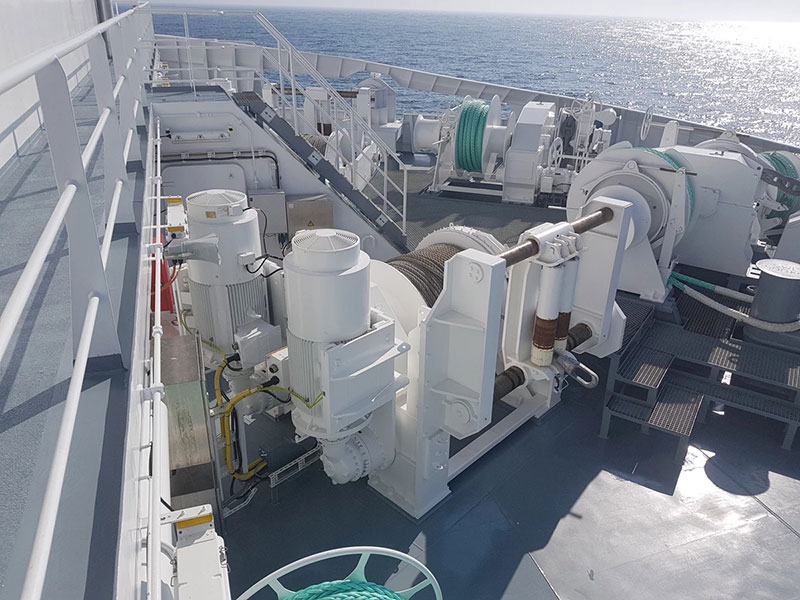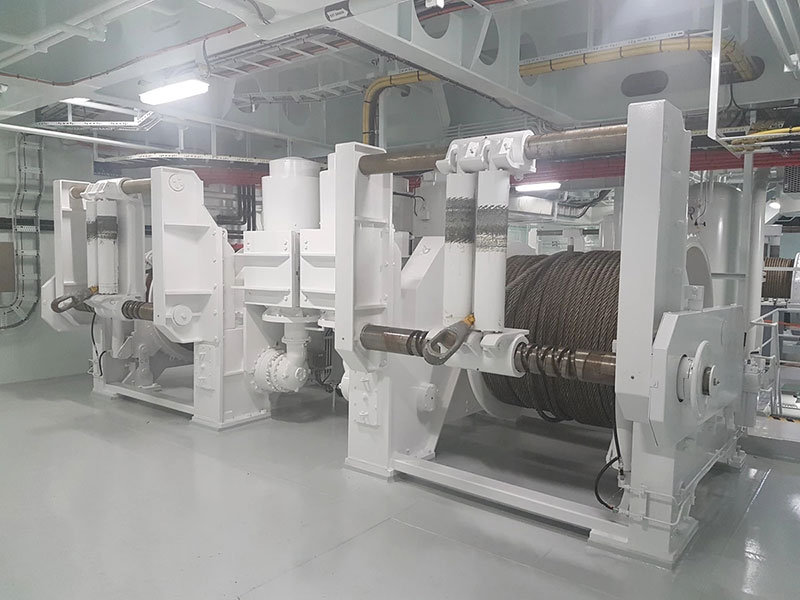Mooring winches are integral to maritime operations, facilitating the secure mooring of vessels to docks or fixed structures. Understanding the various parts and functions of a mooring winch is essential for ensuring safe and efficient mooring operations. In this article, we will explore the key components of a mooring winch and their respective functions.
Drum
The drum is a crucial component of a mooring winch in ship, responsible for storing and releasing the mooring line or wire. It is typically cylindrical and can vary in size and capacity depending on the specific requirements of the vessel being moored. The drum’s primary function is to maintain tension on the mooring line, preventing uncontrolled release and ensuring a secure connection between the vessel and the mooring point.

Braking System
The braking system is an integral safety feature of a mooring winch. It provides control over the tension and release of the mooring line, ensuring the line can be held securely and released gradually when necessary. The braking system prevents sudden movements or slippage, maintaining stability during mooring operations. It is designed to handle the high loads and forces experienced during mooring and can be hydraulically, mechanically, or electrically operated.
Gypsy Wheel (or Chain Wheel)
The gypsy wheel, found in anchor mooring winches designed for handling chains instead of ropes, plays a vital role in guiding and winding the anchor chain during mooring and anchoring operations. It ensures the proper alignment and smooth movement of the chain, reducing the risk of jams or damage. The size and design of the gypsy wheel vary depending on the type and size of the chain being used.

Drive System
The drive system is responsible for powering the mooring winch, providing the necessary torque and rotational force to operate the drum and control the movement of the mooring line. It typically consists of an electric motor, gearbox, and associated components. The drive system allows for precise control and adjustment of the mooring line tension, enabling smooth and efficient mooring operations.
Control Panel
The control panel serves as the interface for the operator to control and monitor the mooring winch. It contains buttons, switches, and indicators that allow for functions such as line release, tension adjustment, and emergency stop. The control panel enables precise control over the winch’s operation, ensuring the desired mooring line movements and providing real-time feedback on the winch’s status.
Conclusion
Mooring winches play a critical role in ensuring safe and efficient mooring operations in the maritime industry. Understanding the key parts and their functions is crucial for operating and maintaining these marine winches effectively. The drum, braking system, gypsy wheel, drive system, and control panel work together to provide controlled tension, secure connections, and precise control over mooring line movements, enhancing the safety and efficiency of mooring operations.